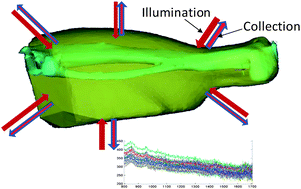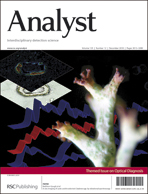Development of non-invasive Raman spectroscopy for in vivo evaluation of bone graft osseointegration in a rat model†
Abstract
The use of bone structural allografts for reconstruction following tumor resection is widespread, although successful incorporation and

- This article is part of the themed collection: Optical Diagnosis

 Please wait while we load your content...
Please wait while we load your content...